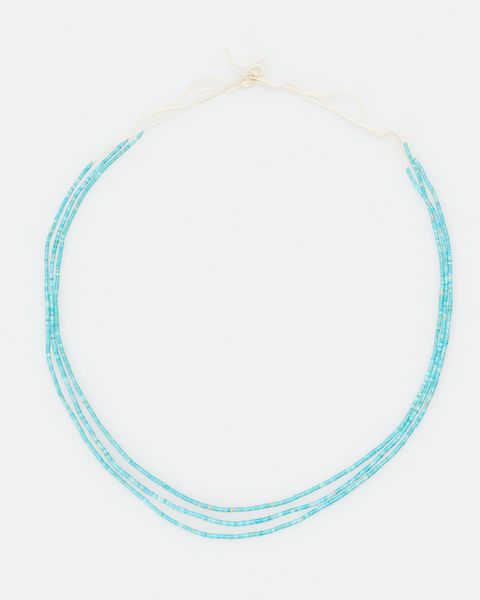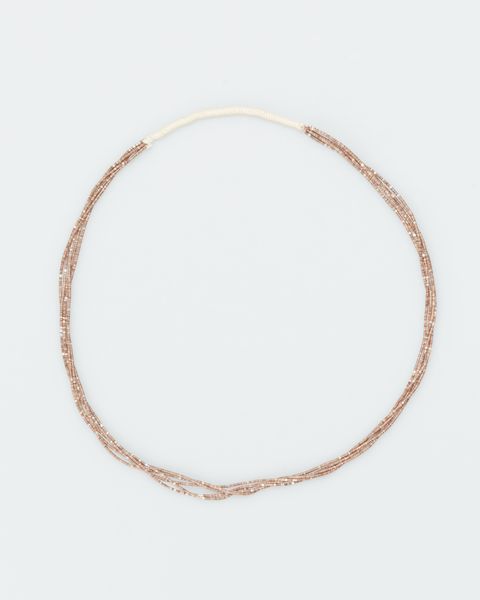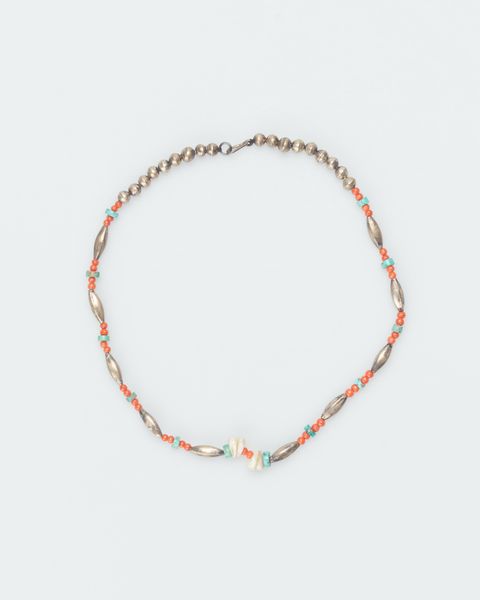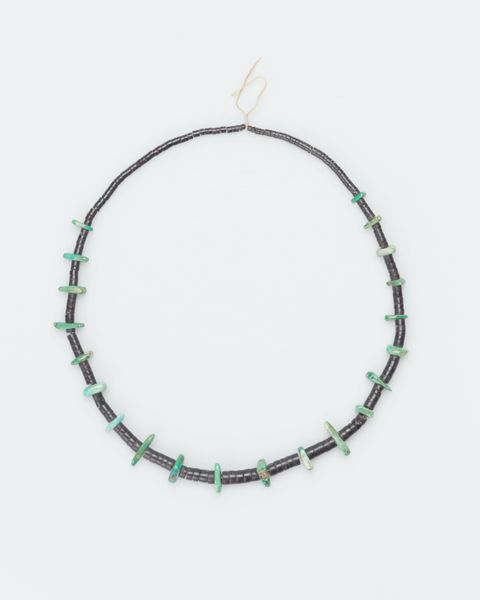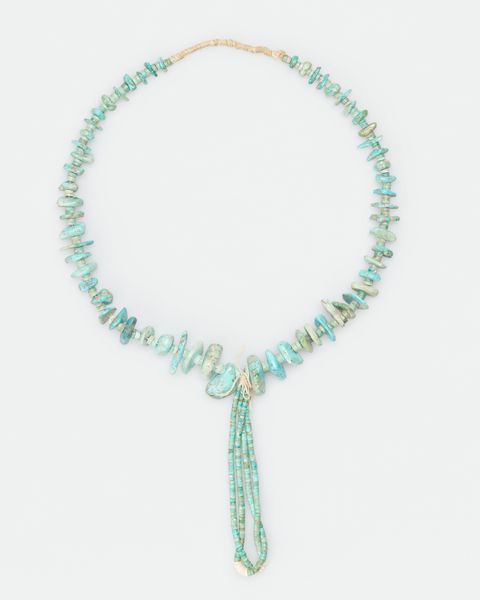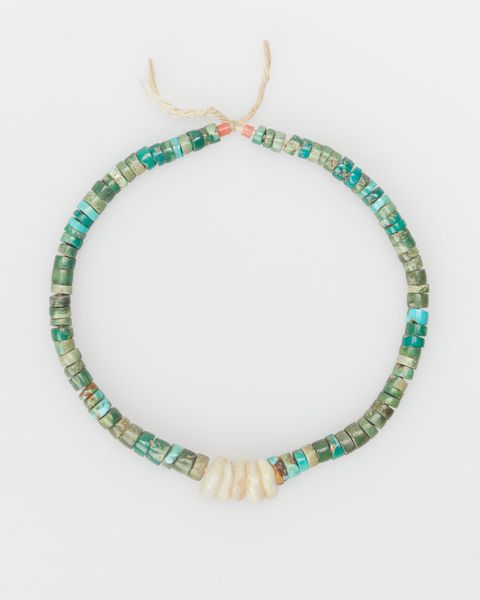
fibre-art, textile
#
fibre-art
#
textile
#
geometric
#
line
#
decorative-art
Copyright: No Known Copyright
Curator: Looking at this piece, I’m struck by its quiet simplicity. It's a textile work titled "Necklace," dating from around 1960. It’s part of the decorative art collection here at the Minneapolis Institute of Art. What are your first thoughts? Editor: It's intriguing, almost ethereal. The pale colour palette and the delicate threads evoke a sense of fragility. But there’s also something repetitive and rhythmic in the geometry that suggests a strength in unity. Curator: Indeed. It sits within a lineage of fiber art that increasingly sought recognition as "high art" during the mid-20th century. How do you think its function as adornment intersects with artistic intention? Editor: Well, historically, jewellery is loaded with socio-economic and political symbolism – declarations of wealth, markers of status. A piece like this, created during the cultural shifts of the 1960s, might suggest a move toward something more minimalist, even democratic. Is it a rejection of more ostentatious displays? Curator: It certainly moves away from overt displays of luxury, which speaks to a wider move by artists and makers towards accessible artforms. The materials, being largely fiber, suggest a connection to the handmade, and possibly a subtle nod to crafts historically gendered as feminine. The light, beaded part seems to call out from an ocean vibe. Editor: Precisely. We also see this around this period within the decorative-arts movement – and wider societal anxieties around consumerism. The simplicity then, might not just be aesthetic, but a statement about sustainable practices and values. The materials possess certain truth and transparency. Curator: Do you believe this reflects a broader understanding of how art reflects identity? How one chooses to represent themselves in the world as an act of self-determination and, potentially, resistance? Editor: Absolutely. Adornment is inherently performative, and in a period defined by rapid change and growing awareness of diverse identities, the deliberate choice of such a piece would have undoubtedly signaled something intentional. The choice of art like this has many different layers and interpretations for the viewer and the wearer, past and present. Curator: It seems as if we have two layers exposed through its historical significance and its role in shifting narratives. The beauty that resides beneath that we should take a closer look. Editor: Well said. And perhaps it's in the dialogue between history, the wearer and theory that the piece ultimately comes alive.
Comments
No comments
Be the first to comment and join the conversation on the ultimate creative platform.


